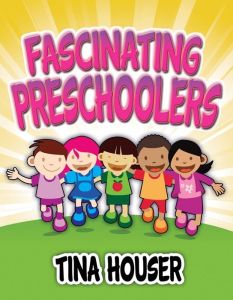Unwrapping Compassion - Part 1

In her newest book, “Unwrapping the Servant: Teaching Kids to Serve God and Others,” Tina offers teaching tips, suggested activities, and a six-week lesson plan to help lay the foundation for a servant’s heart that will become a cornerstone of kids’ faith development.
In this two-part excerpt from “Unwrapping the Servant,” Tina shares how we can start teaching kids about compassion and help them begin to become aware of the needs around them.
Compassion is sympathy (“Sorry this happened to you and that you’re going through this”) and empathy (being sensitive to the feelings of others) blended together, with action thrown in.
Compassion is recognizing a need … being touched by it … and taking a step to help.
Don’t Wait! Since the brain is developing faster in the three-year period between 3-5 years of age, we need to be teaching about compassion at this young age, rather than waiting until kids get older.
Once kids grasp what compassion means and they have regular opportunities to exercise it, compassion becomes the foundation for the “normal” and the “right” thing to do.
We love one another because Christ first loved us!
Consider the following points to help you unwrap the compassion God has placed in your child(ren). These are basic concepts you may assume everyone understands … but they don’t. They are basic teaching methods you may assume everyone uses… but they don’t. They are basic considerations that need to be ingrained in our attitudes to help us become sensitive to numerous needs… maybe going unnoticed in our own backyard.
Do a self-evaluation.
Conduct this self-evaluation with the kids. They should answer “yes” or “no” to each of the questions by using these gestures: open palms facing up mean YES and palms facing down mean NO. You could also use black and white gloves or smile and frown plates.
- Do you enjoy giving something away?
- Are you good at listening when people tell you how they feel?
- Are you kind to other kids, adults, and people you don’t know?
- Are you ever mean?
- Do you demand your way without thinking of others?
- Would you ever give up doing something you want to do to help someone else?
The answers to these questions will give the kids an idea of what they personally understand and the leader a feel for what a “win” looks like as they prepare to help kids unwrap what God has for them.
Learn to recognize needs.
Kids DO NOT see needs around them. They really don’t! Their world is about them, but let’s not put blame on them by saying they’re selfish and self-centered. Parents and teachers have made them that way. Most families are kid-centered. Restaurants, vacations, and TV programs are chosen because of what the child desires. Do this exercise. Watch a video—any family-friendly video—together and identify who needs help. Start pointing out needs of the hero and the underdog… and even the villain. Make it a contest to see who can identify the most. When reading a book, spend time exploring an obvious need. If one of the characters is in a wheelchair, then talk about what that might be like. At first, the kids may think it’s an adventure and fun to be in a wheelchair. Direct them, though, to identify with the person in need—in this case, someone in a wheelchair.
- What would you have to ask someone else to do for you?
- What could you not reach?
- What activities/games would you be left out of?
- What view would you have?
Introduce the places where we are presented with needs daily: home, school, church, community, and the world at large. Challenge kids to identify one need in each area once a week. It’s hard work at first, but you want them to change their focus, and that takes persistence and practice.
Educate kids on needs. You don’t need to depress them! Just give them information. And then, according to their age and abilities, start introducing activities they can be involved in. (We’ve provided many ideas for you to consider in another part of the book.)
Inform kids about difficult circumstances (hunger, disease, lack of water). This will make them more comfortable early on with people in these situations. Remember the common phrase, “Information is power.”
Overcome fear.
The enemy of compassion is fear—a fear of what you don’t understand. Did you get that? Say it out loud: The enemy of compassion is fear. Don’t be afraid of conversations. Don’t be afraid of questions. Don’t be afraid of people who are different than you. When you don’t understand a situation or why people act like they do, you are afraid of being involved. Eliminating the fear of certain people groups will release you and your kids to show compassion without limits. Kids ask questions because they are curious, not because they have some bias or prejudice formed. Be honest, and they’ll grow up treating others with respect.
Twice when our son, Jarad, was young, I was confined to a motorized wheelchair. Other kids thought it looked like a fun thing to play with. Kids we didn’t know would approach us in the mall and say things like, “Wow, that looks like fun. Wanna race?” Jarad would get furious and respond with, “Do you think she likes not being able to walk? How would you like it? I wouldn’t care if she ran over you!” Our son understood the wheelchair and was not afraid of it. The other kids reacted the way they did because they didn’t have knowledge and they were afraid of what the wheelchair represented.
Include LOTS of visuals.
If you’re raising money to provide a community well so people can have clean water, then demonstrate how one water treatment packet can clean 10 liters of nasty water (five 2-liter bottles). This type of demonstration shows the desperate need to get clean water to every person.
Use publicity videos from various organizations. Of course, they want your donation, but their videos will most definitely help your kids realize that not everyone in the world lives the way they do.
Label and discuss emotions.
Learning about serving gives kids an opportunity to expand their vocabulary, particularly with words that describe their emotions. Continually ask kids to name their feelings, whether about real people or imaginary situations.
Instead of just using “sad” and “happy” to describe feelings, encourage your kids to identify what they are experiencing more specifically.
- gloomy
- angry
- miserable
- fuming
- unhappy
- furious
- pleased
- frightened
- joyful
- cross
- cheerful
- calm
- terrified
- depressed
- glad
- quiet
Work with your kids to identify a special phrase they can say when they are hurting for someone else—at that unexpected moment when they recognize a need. Say something like: “That breaks my heart.” “Make me Your hands and feet, Lord.” “God sees and I see.”
The excerpt continues! See part 2.

Tina Houser absolutely loves being able to train volunteers and professionals who have a heart for seeing kids become disciples of Jesus, whether that is through writing curriculum, writing idea books for Warner Press, or being able to speak at conferences. Check out what’s happening with Tina at www.tinahouser.net or read her blog at tinapoint.blogspot.com.
“Unwrapping the Servant” Copyright © 2015 Tina Houser.



















Comments